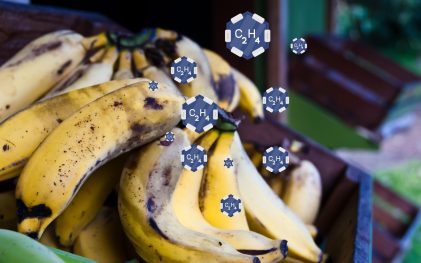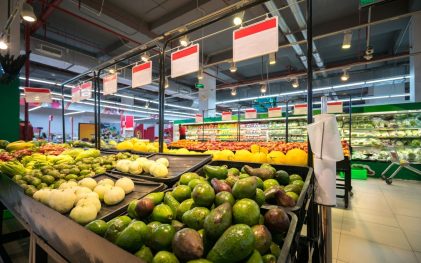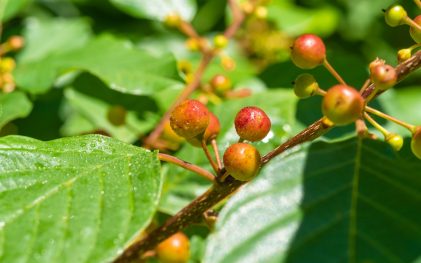Food science articles
How to Detect and Control Ethylene in Storage Rooms
Ethylene must be monitored and controlled as even trace amounts in parts per billion can cause over-ripening, decay, and spoilage. Fixed and portable gas analyzers that can detect and monitor ethylene levels in storage facilities are available on the market. Several strategies exist to lower ethylene levels, including venting, the use of ethylene inhibitors, scrubbers,… Continue reading…
What Is Ethylene Gas and Why Is It Shortening Your Fruit’s Shelf Life?
Ethylene is a natural phytohormone produced by plants and climacteric fruits, but also exists in the supply chain through anthropogenic sources. Ethylene accelerates unplanned ripening processes, causes decay, and increases susceptibility to physiological problems and pathogens. The effects of ethylene depend on fruit maturity stage, species, cultivars, the concentration and exposure duration of the gas,… Continue reading…
Cherry Harvest Time: How to Know the Best Day to Pick Sweet Cherries
Sweet cherries’ harvest maturity can be estimated by chronology and physical attributes like skin color, weight, size, and firmness. Internal quality parameters like soluble solids content, titratable acidity, and taste can also be used as harvest maturity indices. Skin color is considered the best indicator for the optimum harvest maturity of cherries. Simultaneous non-destructive estimation… Continue reading…
What Is Dry Matter Content and Why It’s Crucial for Fresh Produce Quality?
Dry matter is measured on farms to monitor maturity and determine the optimal harvest time for climacteric fruits and vegetables. In the postharvest stage, dry matter is used for quality control for sorting and grading fresh produce. Dry matter determines the storage, transport, and ripening conditions to achieve optimum quality and extended shelf life. Wholesalers,… Continue reading…
What Causes Avocado Quality Problems? Common Issues in the Supply Chain Explained
Avocados are challenging due to their unique ripening process, which requires a few days post-harvest to overcome the “tree factor.” The leading causes of quality problems are incorrect maturity at harvest, careless handling, and improper storage temperatures and gas mixtures in cool storage. Limiting problems starts with harvesting avocados at the correct maturity and quality… Continue reading…
What Are the Harvest Maturity Indices for Strawberries?
Strawberries can be harvested at two different maturities to meet marketing needs at varying distances. Color is the most critical parameter used as a maturity index for strawberry harvest. Other harvest maturity indices are size, sugar content, and taste. Non-destructive measurements using portable NIR spectroscopy devices are best suited for establishing harvest maturity indices. Strawberries… Continue reading…
How Is Non-Destructive Quality Assessment of Fresh Produce Changing the Supply Chain?
The standard quality parameters monitored are color, texture, sugar, titratable acidity, and dry matter content. Several destructive methods of estimation exist for the parameters. Near-infrared spectroscopy is currently the only non-destructive method for quality control of sugars, titrable acidity, internal color, and dry matter content. Near-infrared spectroscopy can precisely and rapidly estimate all quality parameters,… Continue reading…
What Are the Best Melon Harvest Maturity Indices?
The harvest maturity indices vary based on the melon groups. The physical harvest maturity indices are size, shape, weight, color, firmness, stem detachment, and tendril condition. The chemical harvest maturity indices include Brix/sweetness, titrable acidity, taste, and aroma. The optimal harvest maturity index for melon differs for each accession. Several aspects of the ripening process must… Continue reading…
Advances in Near-Infrared Spectroscopy for Root Crop Quality Detection
Near-infrared (NIR) spectroscopy is an interesting technology because it can detect quality nondestructively, rapidly, and precisely. NIR spectroscopy can correctly estimate internal quality parameters like protein, sugar, water content, starch, and anthocyanins. NIR spectroscopy helps in the early detection of potato diseases and their severity. NIR spectroscopy for root crops has been applied in laboratories,… Continue reading…
What Is the Best Blackberry Harvest Maturity Index for Quality?
Color is the chief harvest maturity index. Other appearance parameters, such as firmness, size, and weight, are also used. Chemical harvest maturity indices, especially the latter, are crucial, including total soluble solids (sugar content), titrable acidity, and taste. Blackberries for processing require different harvest maturity indices and increasingly use dry matter. Harvest maturity indices are… Continue reading…











